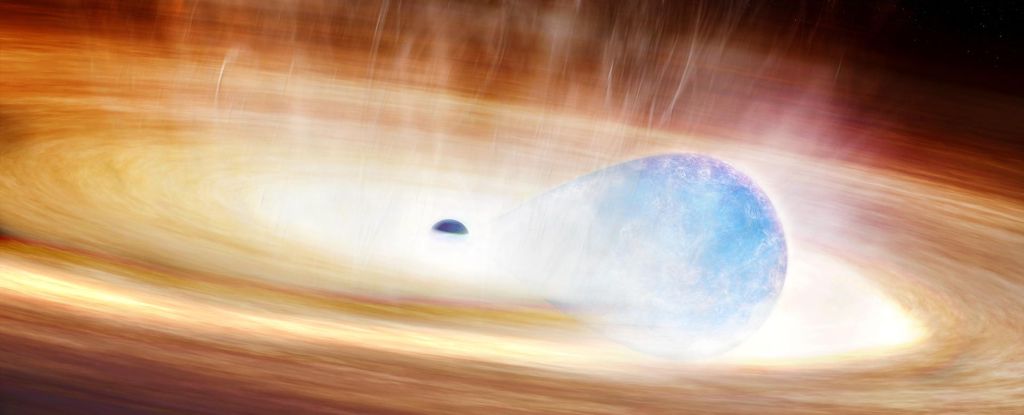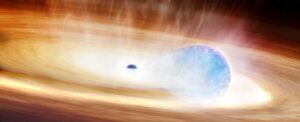
Astronomers have made a groundbreaking discovery regarding a supernova that may have been triggered by a black hole’s gravitational pull. The event, designated as SN 2023zkd, was first detected on July 7, 2023, approximately 750 million light-years from Earth. Initially, it appeared to be a typical supernova, characterized by the explosive death of a massive star. However, subsequent analysis revealed an unusual occurrence: the supernova brightened again six months later.
The initial observations of SN 2023zkd, recorded by the Zwicky Transient Facility, conformed to expectations for supernova behavior, with a bright flare followed by a gradual dimming. Yet, a search for cosmic irregularities led astronomers to re-examine the data, prompting a deeper investigation into the explosion’s peculiar characteristics.
In January 2024, advanced tools flagged the event for further analysis, noting that the brightness had unexpectedly returned to a level similar to its initial detection. This anomaly prompted researchers to explore archival data from various observatories. Their findings indicated that the astronomical object had been gradually brightening for over four years prior to the explosion, showcasing erratic fluctuations that diverged from typical pre-supernova behavior.
Potential Black Hole Interaction Explained
According to Alexander Gagliano from the NSF Institute for Artificial Intelligence and Fundamental Interactions, this peculiar sequence of events suggests a catastrophic interaction between a massive star and a black hole, potentially the first strong evidence of such close encounters leading to a supernova. Gagliano stated, “Our analysis shows that the blast was sparked by a catastrophic encounter with a black hole companion.”
This discovery adds to the understanding of supernovae, which can occur through various mechanisms, including the deaths of massive stars and thermonuclear explosions on white dwarfs. Generally, astronomers expect a supernova to follow a predictable light curve, but SN 2023zkd’s return to brightness after such a long duration is unprecedented.
The researchers propose that the dying star was in a tight orbit with a black hole, resulting in significant mass loss from the star. As the two celestial bodies spiraled closer, the star’s gravitational influence may have caused it to engulf the black hole. However, the black hole’s intense gravitational field may have exerted such stress on the star that it ultimately led to a supernova explosion.
The initial peak in brightness was attributed to the supernova blast colliding with low-density gas surrounding the system. The subsequent brightness spike resulted from a slower collision with a denser cloud of material expelled by the star during its final years. These findings highlight the complexities of interactions between stars and black holes, suggesting that the gravitational dynamics can lead to dramatic outcomes.
Implications for Future Research
The implications of this research are significant for the field of astronomy. Gagliano remarked on the potential of real-time observations, stating, “We’re now entering an era where we can automatically catch these rare events as they happen, not just after the fact.” This advancement enables scientists to connect the lifecycle of stars to their ultimate demise more effectively, presenting exciting opportunities for further exploration.
The research is set to be published in The Astrophysical Journal, and a preprint is already available on arXiv. As astronomers continue to delve into the mysteries of the universe, discoveries like SN 2023zkd could reshape our understanding of stellar evolution and the role of black holes within it.







